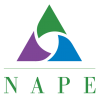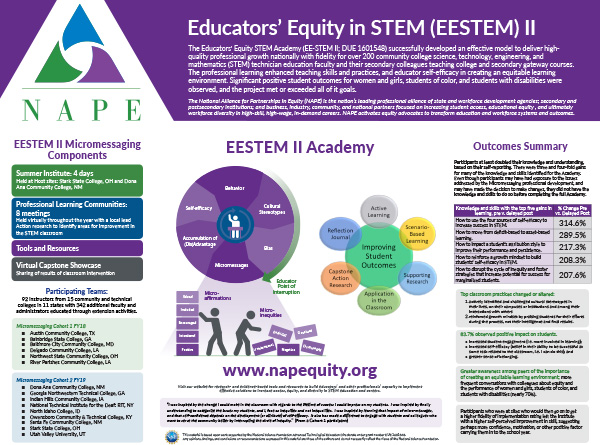Through funding from the National Science Foundation (NSF) Advanced Technological Education (ATE) Program (DUE 1601548), NAPE delivered a rigorous ATE Professional Development for Educators program to community college faculty in technician education programs and community college and high school faculty who teach gateway courses that feed into technician education programs.
Dona Ana Community College in Las Cruces, New Mexico, and Stark State College in Canton, Ohio, served as host sites for training.
The EE-STEM Academy Phase II
The goal of this grant was to develop an effective model for delivering a high-quality professional growth opportunity nationally with fidelity for 200 community college STEM technician education faculty and their colleagues teaching college and secondary gateway courses to enhance their teaching skills and practices leading to improved academic outcomes for students, especially those historically underrepresented in STEM by gender, race and ethnicity, and special population status, including students with disabilities.
The EE-STEM Academy Phase II (EE-STEM II), used the Micromessaging to Reach and Teach Every Student™ program, which delivers a rigorous professional development (PD) program for educators through four components:
- a 4-day (28-hour) Summer Institute in a central location,
- eight structured and facilitated monthly Professional Learning Communities (PLCs) hosted in the academic year,
- tools and resources that are easily available to the participants and support and enhance the work begun at the Institute, and
- a Capstone Presentation hosted at the same location as the initial training at the conclusion of the academic year for educators to present their selected strategy and the impact of their strategy on student outcomes to colleagues, administrators, and the Grant Leadership Team.

This material is based upon work supported by the National Science Foundation under Grant No. DUE-1601548. Any opinions, findings, and conclusions or recommendations expressed in this material are those of the author(s) and do not necessarily reflect the views of the National Science Foundation.

